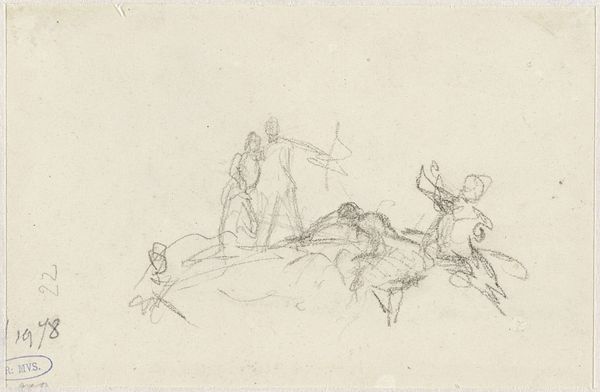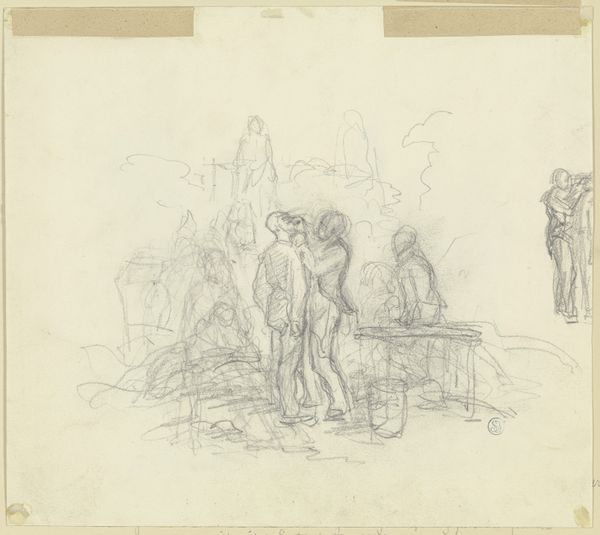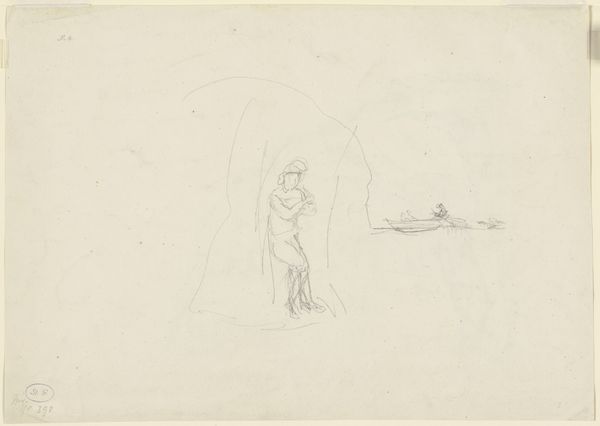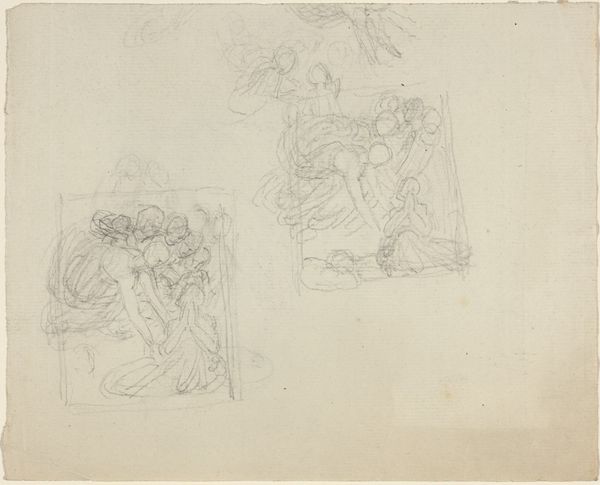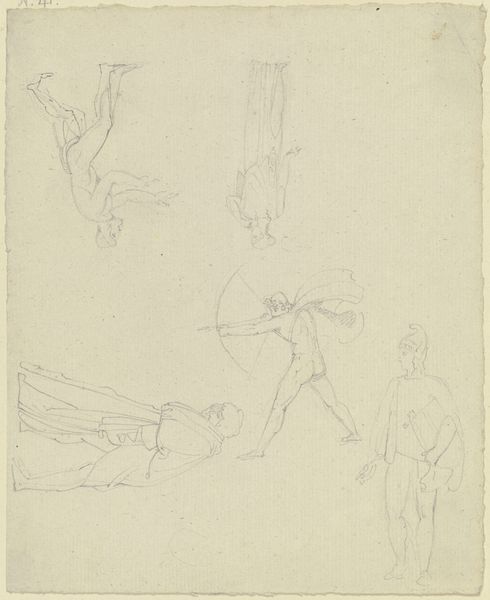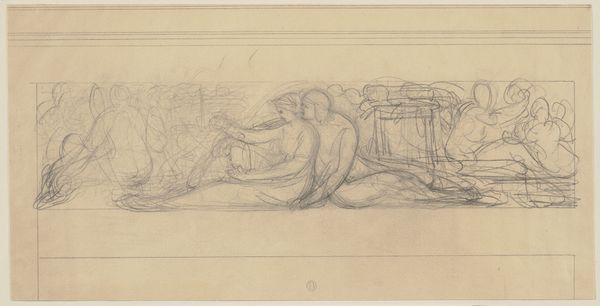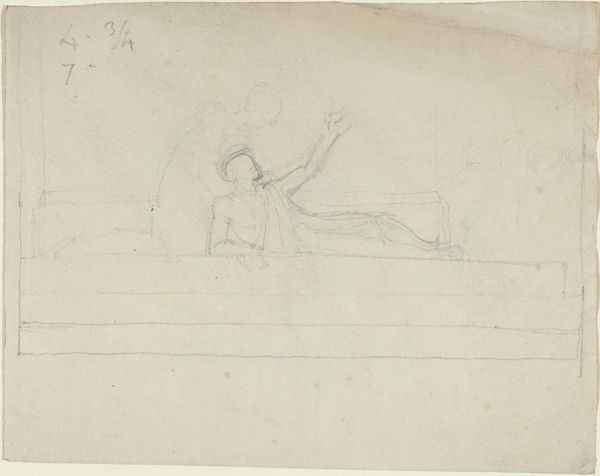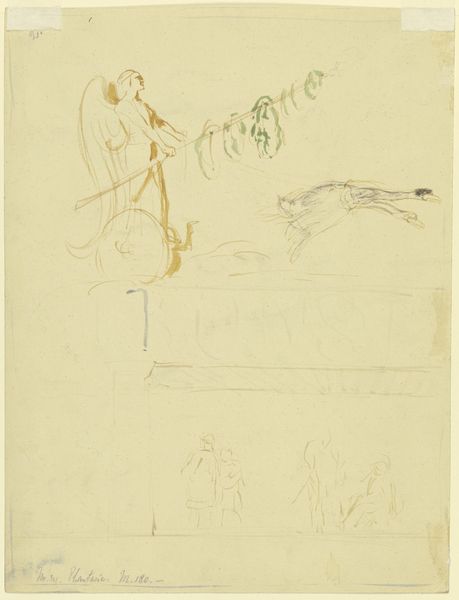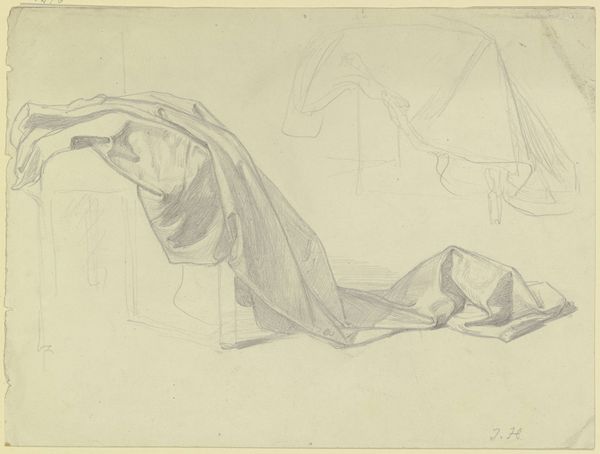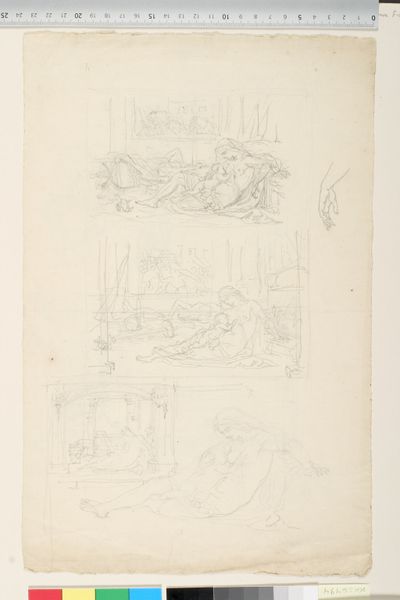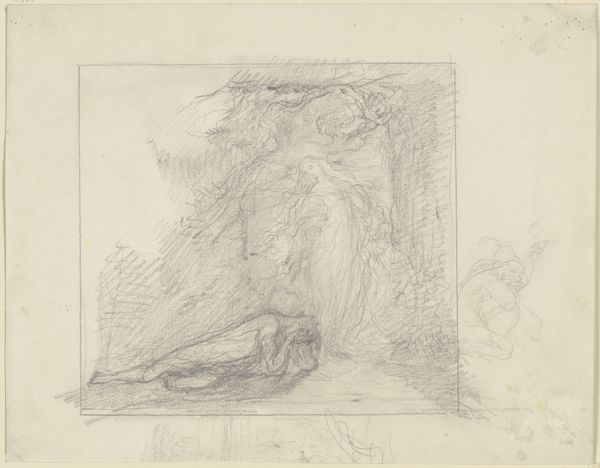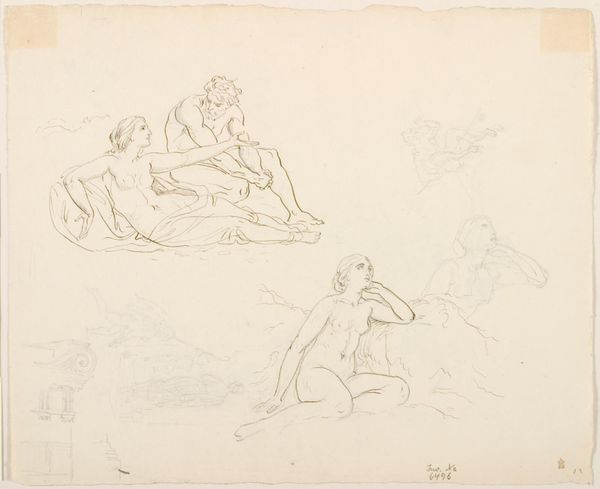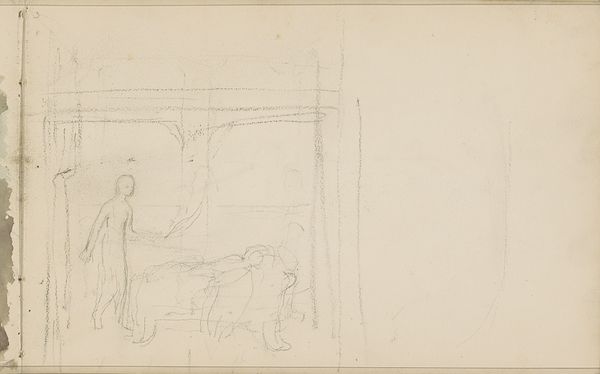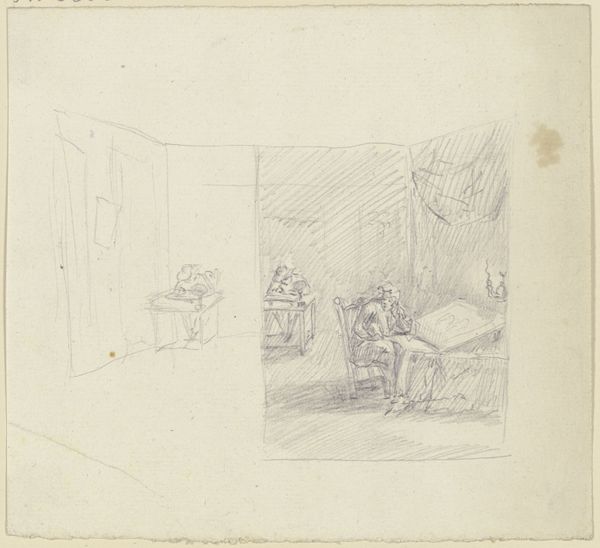
Frau, mit aufgestütztem Kopf bäuchlings auf einem Bett liegend, darunter zwei tanzende Gestalten
0:00
0:00
drawing, paper, pencil
#
drawing
#
16_19th-century
#
landscape
#
figuration
#
paper
#
sketch
#
pencil
#
nude
Copyright: Public Domain
Editor: This intriguing sketch by Victor Müller, titled "Woman Lying Prone on a Bed with her Head Propped Up, Below Two Dancing Figures," made with pencil on paper, immediately evokes a dreamlike quality. What is your interpretation of this juxtaposition of figures? Curator: The contrast immediately strikes me as well. The languid pose of the woman, burdened by thought, exists almost superimposed upon the ecstatic release of the dancing figures below. The visual language speaks to layered states of consciousness. Do you see a connection in their gestures, however faint? Editor: I see that the woman's arm is raised to support her head; and one dancer has their arms similarly raised. So there may be a link. Curator: Indeed. The echo could signify an aspiration towards freedom, or perhaps the memory of it, a dance once known. And there's a tension inherent in the duality, isn’t there? Dreams and waking life often blur boundaries. In the symbolic order, what could the bed signify in relation to the dance? Editor: Perhaps the bed represents constraint, both physical and emotional, whereas the dancing figures symbolize liberation. Curator: Precisely. Think about historical perspectives. The societal roles imposed on women and the longing for escape from such constraints. It suggests a rich internal world struggling against external expectations. Notice how the medium of pencil contributes to a fleeting quality, as if the figures are emerging from a subconscious state. Editor: It's fascinating how a simple sketch can convey such complex emotions and ideas. Curator: It is. By using accessible symbolism, the work communicates anxieties, aspirations, and the perennial human struggle for liberation. The dancers are not just dancing, they’re evoking our primal urge to be free. Editor: I will always remember the role of symbolism in accessing these historical, psychological and emotional undercurrents within works of art.
Comments
No comments
Be the first to comment and join the conversation on the ultimate creative platform.
